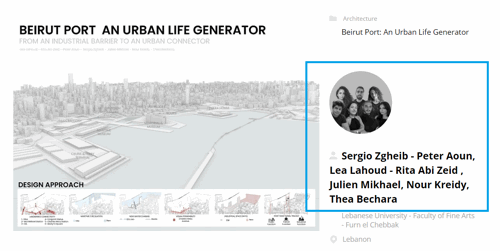Steps and diagonal

Project idea
In response to the need for increased density in suburban areas around Paris and to limit urban sprawl, reimagining the existing fabric of single-family homes in Clamart offers an opportunity for a respectful and sustainable renewal. This project seeks to redesign a suburban neighborhood by introducing two new housing typologies, connected by a shared walkway to three existing houses, that have been preserved and renovated.
Project description
In the suburban neighborhood of Clamart, three detached houses stand side by side, separated by high concrete walls. Each one has its own garden and a strong sense of privacy. This type of fabric reflects a clear desire: to have one’s own home, one’s own piece of land, and a quiet connection to nature. But when repeated over entire neighborhoods, this model leads to low-density urban sprawl, consuming large amounts of land while encouraging separation and car dependency.
This project respects the wish for comfort, privacy, and green space. But it asks how these qualities could come from living together, not just from separate, individual plots. It proposes a semi-collective housing typology that respects the needs of individuals while encouraging a shared, more thoughtful way of inhabiting land.
On the plot, six new residential buildings are added around and between the existing houses. Each new building has two floors, with one apartment per floor. All the homes are connected by a light, open steel walkway on two levels, forming a common access structure that circulates freely between buildings without enclosing them
These typologies are based on two ideas: steps and diagonal views. The steps follow the diagonal, upon entering, the entire depth of the dwelling is revealed, with a plunging view toward nature.
They are designed to be adaptable, allowing residents to adjust the space according to their needs. Curtains follow the beam layout and offer flexibility. They can enlarge bedrooms or create a play area, allow cooking without being seen by guests, they can also separate the glazed living room, creating a quiet space connected to nature. Some furniture elements are also modular: the 40 cm step in the living room can become a seat, and the beds can be converted into desks. This approach gives residents the ability to take control of their home and adapt it over time, like a sailor learning to handle a sailboat, rather than living in a fully automated space like a yacht.
These new homes aim to create comfort in a compact space, without spreading out, in order to preserve natural environments. The aim is to design and to live less in size, but more in quality.
The old concrete walls between the plots are partly removed and reused as retaining walls to create a series of terraced gardens at different levels. These gardens are shared, but their design allows for personal moments. The changes in level help create privacy within shared space, without needing fences or barriers.
The existing houses are renovated while keeping their structure, the central house becomes a shared kitchen and bath area.
This project explores how to densify a suburban area while preserving its qualities. It proposes a type of housing that increases density without extending the city, by reusing existing plots and adapting them to accommodate more households. It aims to offer an alternative to the isolated house model, through shared structures and spaces that maintain privacy and connection to nature.
Technical information
The level differences of the added housing typologies are determined by their layout, organized around nine posts, that define the space, the beam spans and the height of the steps.
The structure and façades are made of wood, the significant drop of the wooden beams helps create this play of levels.
The last step, 40 cm high, can creates a seat in the living room, which opens onto large bay windows. The structure becomes an integrated piece of furniture, placing the living space between indoor and outdoor. This connection to the outside can be enhanced by closing the living space off from the rest of the apartment with a curtain, This allows the room to be in close relation to nature.










